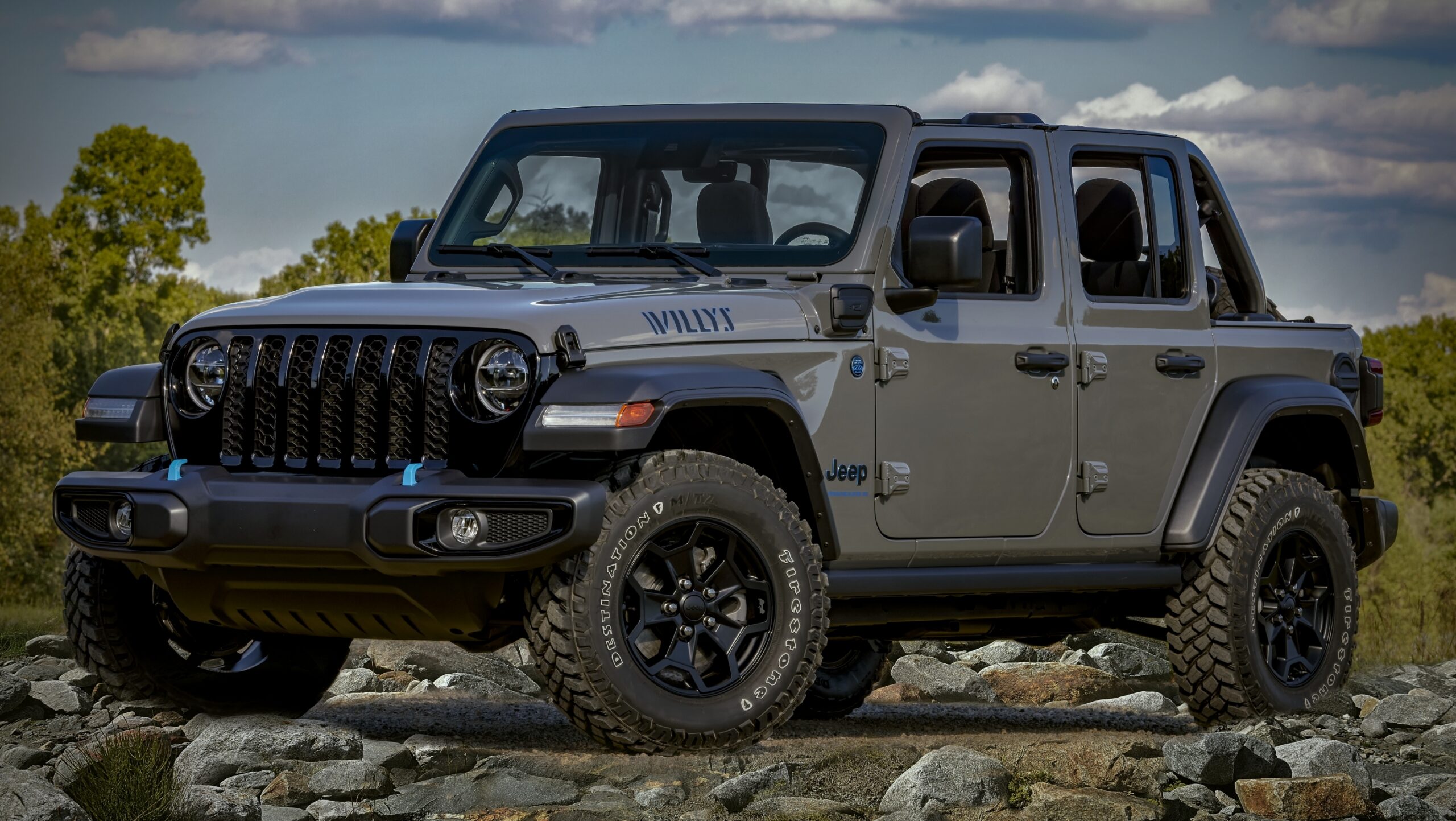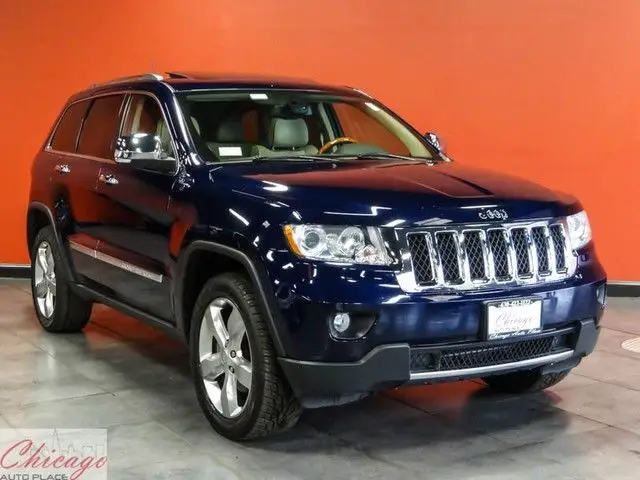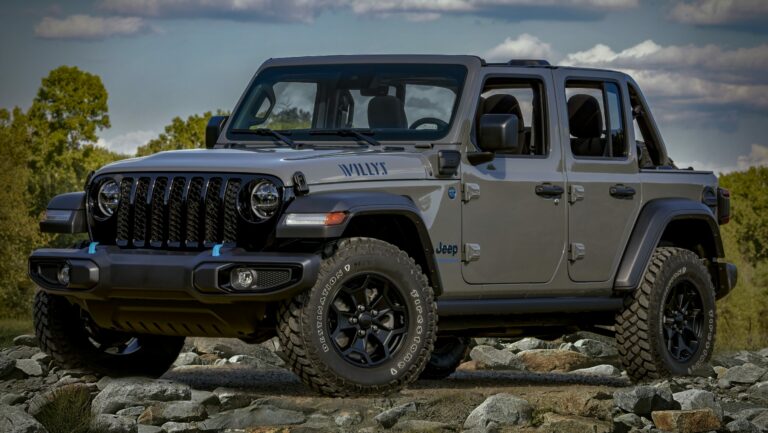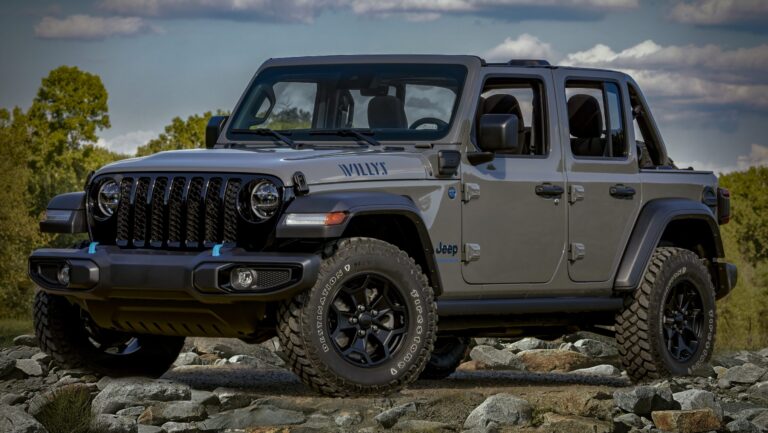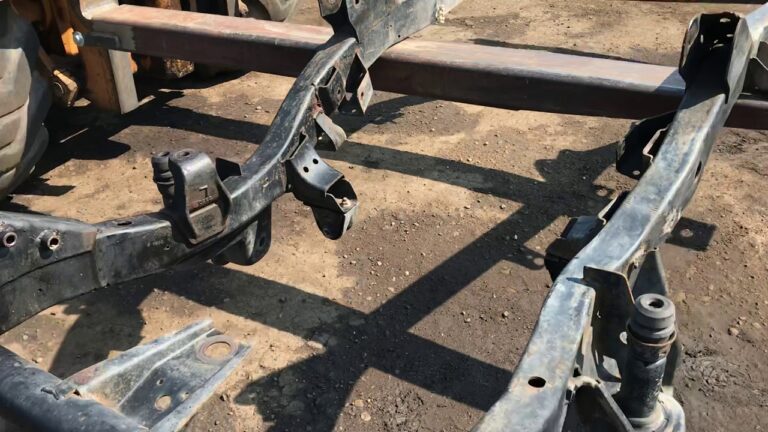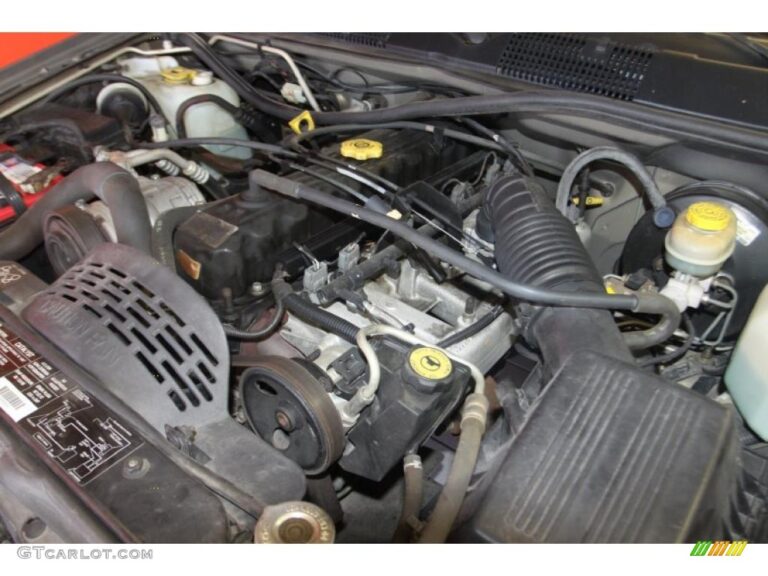Jeep XJ Dana 44 Rear Axle For Sale: The Ultimate Upgrade Guide
Jeep XJ Dana 44 Rear Axle For Sale: The Ultimate Upgrade Guide jeeps.truckstrend.com
For any dedicated Jeep Cherokee (XJ) enthusiast, the quest for enhanced off-road capability often leads to one critical component: the rear axle. While the stock Dana 35 and Chrysler 8.25 axles served their purpose for everyday driving and light trails, they quickly become the weakest link when larger tires, more aggressive terrain, or serious off-roading come into play. This is where the legendary Jeep XJ Dana 44 rear axle enters the conversation – a highly sought-after, robust upgrade that promises durability, strength, and a vast aftermarket support system.
This comprehensive guide will delve deep into everything you need to know about finding, evaluating, purchasing, and installing a Jeep XJ Dana 44 rear axle. Whether you’re a seasoned off-roader looking to bulletproof your rig or a newcomer planning your first major upgrade, understanding the nuances of this critical component is paramount.
Jeep XJ Dana 44 Rear Axle For Sale: The Ultimate Upgrade Guide
Why the Dana 44 for Your XJ? Unpacking the Performance Advantage
The allure of the Dana 44 for the Jeep XJ is rooted in its inherent design superiority compared to its factory counterparts. Here’s why it’s considered the gold standard for many XJ builds:
- Superior Strength: The Dana 44 boasts a significantly larger ring and pinion gear set than the Dana 35, and often a larger one than the Chrysler 8.25 (especially the 27-spline variant). This translates directly into greater torque handling capacity and reduced risk of gear failure under stress.
- Stronger Axle Shafts: Most XJ Dana 44s come with 30-spline axle shafts, a notable upgrade from the 27-spline Dana 35 shafts, which are notorious for snapping under load. While the later model 29-spline Chrysler 8.25 is a decent axle, the Dana 44 still holds an edge in aftermarket support and overall robustness.
- Enhanced Aftermarket Support: The Dana 44 is one of the most widely used and supported axles in the off-road industry. This means an abundance of aftermarket lockers, limited-slip differentials, gear ratios, heavy-duty axle shafts (like chromoly), and differential covers are readily available, allowing for extensive customization and bulletproofing.
- Ideal for Larger Tires: If you plan on running 33-inch tires or larger, the Dana 44 becomes almost a necessity. It can withstand the increased leverage and strain that bigger tires place on the drivetrain, preventing costly failures on the trail.
- Direct Bolt-In (Mostly): Crucially for XJ owners, the genuine XJ Dana 44 is a direct bolt-in replacement for the original axle, meaning minimal fabrication is required. This significantly simplifies the upgrade process compared to adapting axles from other vehicles.

Identifying a True XJ Dana 44: What to Look For
Not all Dana 44s are created equal, and not all will bolt directly into your XJ. To avoid costly mistakes, it’s vital to know how to identify an authentic Jeep XJ Dana 44:
- Casting Mark: The most obvious indicator is the "44" cast into the differential housing itself, typically on one of the webbing sections. Don’t confuse this with other numbers or a "44" on a tag – look for the direct casting.
- Vehicle Origin: The genuine XJ Dana 44 was primarily offered as an optional upgrade (often part of a "Tow Package" or "Up-Country" package) on 1987-1990 Jeep Cherokee XJs. While some very early 1984-1986 models might have rarely seen them, and later models (1991-2001) almost exclusively came with the Dana 35 or Chrysler 8.25, the 87-90 window is your sweet spot.
- Axle Width: An XJ Dana 44 will have a wheel mounting surface (WMS) to WMS width of approximately 60.5 inches. This is crucial for maintaining proper track width and ensuring a direct fit without requiring custom wheels or spacers.
- Lug Pattern: Confirm the standard Jeep 5×4.5-inch bolt pattern.
- Leaf Spring Perches: The XJ Dana 44 will have leaf spring perches designed for an under-axle setup. This distinguishes it from other Dana 44 applications (like TJ/YJ Wranglers, or Grand Cherokees) that might use coil springs or different mounting configurations, requiring significant fabrication to fit an XJ.
- Brakes: Most XJ Dana 44s came with drum brakes. While a disc brake conversion is a popular upgrade, the presence of drums is often an indicator of a factory XJ unit.
Key Components and Features to Consider
When evaluating a Jeep XJ Dana 44 rear axle for sale, understanding its internal components is essential:
- Gearing: The original XJ Dana 44s came with various gear ratios, commonly 3.07, 3.55, or 3.73. It’s critical to know the ratio to ensure it matches your front axle, or plan for a re-gear to accommodate larger tires. You can often find the ratio stamped on a metal tag attached to one of the differential cover bolts, or by counting teeth if the cover is off.
- Differential Type: Most factory XJ Dana 44s came with an open differential. Some may have been equipped with a Trac-Lok (limited-slip differential). While these are decent for mild off-roading, serious enthusiasts will often replace them with a selectable locker (e.g., ARB, Eaton E-Locker) or an automatic locker (e.g., Lock-Right, Detroit Locker) for maximum traction.
- Axle Shafts: As mentioned, the 30-spline shafts are a significant upgrade. Inspect them for any signs of twisting, damage, or wear, especially at the splines. Many owners opt for aftermarket chromoly shafts for even greater strength, particularly when running larger tires or a locker.
- Brake Setup: The stock drum brakes work, but a disc brake conversion (often using parts from a ZJ Grand Cherokee or specific kits) is a highly recommended upgrade for improved stopping power, especially with larger tires.
Where to Find a Jeep XJ Dana 44 Rear Axle For Sale
Finding an XJ Dana 44 can be a scavenger hunt, but persistence pays off. Here are the most common avenues:
- Salvage Yards/Junkyards: This is often the primary source for original XJ Dana 44s. Call around to local and regional yards. Ask specifically for 1987-1990 XJ Cherokees with tow packages. Be prepared to pull the axle yourself or pay for removal.
- Online Marketplaces: Craigslist, Facebook Marketplace, and dedicated Facebook groups for Jeep XJ owners or parts are excellent resources. Set up alerts for "XJ Dana 44" or "Jeep Cherokee Dana 44."
- Jeep Forums and Communities: Websites like NAXJA (North American XJ Association) and JeepForum.com have active classified sections where members buy, sell, and trade parts. These communities often have knowledgeable sellers who understand the value and specifics of the XJ Dana 44.
- Specialty Off-Road Shops/Axle Builders: Some shops might occasionally have a rebuilt XJ Dana 44 in stock, or they can build one to your specifications using a sourced housing. This is typically the most expensive option but offers convenience and a warrantied product.
- Word of Mouth: Let your local off-road buddies know you’re looking. Sometimes the best deals come from someone cleaning out their garage.
What to Inspect Before Buying: A Critical Checklist
Purchasing a used axle requires a thorough inspection. Don’t rush, and if possible, bring a knowledgeable friend.
- Housing Straightness: Look down the axle tubes from one end to the other. Are they perfectly straight? Any visible bends or kinks indicate a damaged axle that may be unsafe or require costly straightening.
- Rust and Corrosion: Surface rust is common and generally not an issue. However, deep pitting, flaking, or structural rust around mounting points or the differential housing is a red flag.
- Differential Fluid Condition: If possible, remove the differential cover (or at least the fill plug). Milky fluid indicates water contamination, while a burnt smell suggests excessive heat or worn-out gears/bearings. Look for excessive metal shavings in the fluid or stuck to the magnetic drain plug (if present).
- Pinion and Wheel Bearing Play: Grasp the pinion yoke and try to move it up and down, and side to side. A small amount of rotational play is normal, but excessive movement indicates worn pinion bearings. Similarly, check for play in the axle shafts where they exit the housing; excessive wobble points to worn wheel bearings.
- Mounting Brackets: Inspect the leaf spring perches, shock mounts, and control arm mounts (if applicable for aftermarket upper control arm brackets) for bends, cracks, or severe rust.
- Axle Shafts: Pull the shafts out if possible and inspect the splines for twisting or damage. Check the shaft itself for straightness.
- Brake Components: Assess the condition of the drum brakes (shoes, cylinders, drums) or disc brake components (rotors, calipers). While these are often replaced, their condition can indicate how well the previous owner maintained the vehicle.
- Overall Damage: Look for any signs of impact damage, cracks in the housing, or repairs (welds) that look questionable.
The Installation Process: An Overview
While a detailed step-by-step guide is beyond this article’s scope, here’s an overview of the installation process for an XJ Dana 44:
- Preparation: Safely lift the vehicle and support it on jack stands. Remove wheels and tires.
- Disconnecting Components: Disconnect the driveshaft, brake lines, E-brake cables, shock absorbers, and sway bar links (if connected to the axle).
- Lowering the Axle: Support the differential with a jack, then unbolt the U-bolts securing the leaf springs to the axle perches. Carefully lower the old axle and roll it out from under the vehicle.
- Prepping the New Axle: If the new Dana 44 is bare, transfer any necessary components from your old axle (e.g., brake lines, vent tube, ABS sensors if applicable, although XJ D44s typically don’t have ABS sensors). This is also the ideal time to install a locker, new gears, or chromoly shafts.
- Installation: Roll the Dana 44 under the vehicle. Carefully align the leaf spring perches with the leaf springs and raise the axle into position. Install new U-bolts and tighten them to spec.
- Reconnecting: Reconnect the driveshaft, brake lines, E-brake cables, shocks, and sway bar links. Bleed the brakes thoroughly to remove any air from the system.
- Fluid Fill: Fill the differential with the correct type and amount of gear oil (typically 75W-90 or 80W-90, often with a friction modifier for limited-slip differentials).
- Final Checks: Double-check all bolts for proper torque. Test the brakes before driving.
Challenges: Be prepared for seized bolts, rusted brake lines, and general difficulty working in tight spaces. Having a good set of tools, penetrating oil, and a torque wrench is essential. If you’re not comfortable with automotive mechanics, consider professional installation.
Post-Installation Considerations & Upgrades
Once your Dana 44 is installed, a few steps and potential upgrades can maximize its performance and longevity:
- Break-in Period (if re-geared): If you’ve installed new gears, follow a proper break-in procedure (typically several heat cycles and driving patterns) to ensure proper seating of the gear set and prevent premature wear.
- Fluid Changes: Change the differential fluid after an initial break-in period (e.g., 500 miles) and then regularly as part of your maintenance schedule.
- Heavy-Duty Diff Cover: A thick, cast differential cover provides superior protection against rocks and impacts compared to the stamped steel factory cover.
- Disc Brake Conversion: As mentioned, this is a popular and highly recommended upgrade for improved stopping power and easier maintenance.
- Axle Truss/Gussets: For extreme off-roading, a welded-on truss or gussets can further strengthen the axle tubes and prevent bending, especially if you’re running very large tires or jumping your Jeep.
- Chromoly Axle Shafts: If you plan on running a locker and tackling challenging trails, upgrading to chromoly shafts will significantly reduce the risk of shaft breakage.
Common Pitfalls and Solutions
- Bent Axle Tubes: A common issue with heavily used axles. If minor, a truss might help; otherwise, professional straightening or tube replacement is needed. Inspect carefully before buying.
- Worn Bearings/Seals: Expect to replace these during the installation. Factor the cost of new wheel bearings, seals, and pinion bearings into your budget.
- Incorrect Gearing: Ensure the gear ratio matches your front axle. If not, budget for a re-gear, which can be costly.
- Damaged Brackets: If the factory brackets are bent or rusted, they can be cut off and new aftermarket brackets welded on.
- High Cost of the Axle Itself: XJ Dana 44s are rare and highly sought after, driving up prices. Be patient, search widely, and be prepared to travel for a good deal.
Jeep XJ Dana 44 Rear Axle For Sale: Estimated Price Table
Prices for XJ Dana 44 axles can vary wildly based on condition, location, and urgency of sale. This table provides a general estimate for the US market.
| Condition/Configuration | Estimated Price Range (USD) | Key Features/Notes |
|---|---|---|
| Bare Housing | $200 – $400 | Housing only, no internal components (gears, shafts, carrier). Requires full build-up. |
| Complete Stock (Needs Rebuild) | $300 – $600 | Includes gears, shafts, carrier, brakes. Likely needs new bearings, seals, fluid, and brake work. Gearing unknown or undesirable. |
| Complete Stock (Good Condition) | $600 – $1,000 | Functional with minimal issues. Bearings and seals might be old but not failing. Gearing may or may not be ideal for your setup. Often includes original drum brakes. |
| Rebuilt with New Gears | $1,000 – $1,500 | Professionally rebuilt with new bearings, seals, and desired gear ratio installed. May or may not include a locker. Excellent "bolt-in and go" option. |
| Upgraded (Locker/Chromoly Shafts) | $1,500 – $2,500+ | Fully built with a performance locker (e.g., ARB, Detroit), chromoly axle shafts, heavy-duty diff cover, and possibly disc brake conversion. Ready for serious abuse. |
| Custom Built/New Housing | $2,500 – $4,000+ | Brand new Dana 44 housing (often aftermarket) built specifically for XJ with all new components, chosen gearing, and locker. Top-tier option for ultimate strength and reliability, but highest cost. |
Note: These prices are estimates and can fluctuate based on market demand, seller, and region. Shipping costs (if applicable) can add significantly to the total.
Frequently Asked Questions (FAQ)
Q1: Is the XJ Dana 44 a direct bolt-in for all Jeep XJs?
A1: Yes, the XJ Dana 44 is a direct bolt-in for all 1984-2001 Jeep Cherokee (XJ) models. The spring perches, shock mounts, and overall width are compatible.
Q2: What years did the XJ Dana 44 typically come in?
A2: The XJ Dana 44 was primarily found in 1987-1990 Jeep Cherokees, usually those equipped with a factory "Tow Package" or "Up-Country" package.
Q3: Can I use a Dana 44 from a different Jeep model (e.g., TJ, ZJ, YJ)?
A3: While theoretically possible, using a Dana 44 from other Jeep models (like a TJ Wrangler or ZJ Grand Cherokee) requires significant fabrication. They have different widths, spring perches (coil vs. leaf), and mounting points, making them far from a direct bolt-in for an XJ.
Q4: What’s the main advantage of the Dana 44 over the Chrysler 8.25?
A4: The Dana 44 typically has a larger ring and pinion, a stronger housing design, and 30-spline axle shafts (compared to the 27- or 29-spline 8.25). It also benefits from a wider range of aftermarket locker and gear options.
Q5: How much do XJ Dana 44 axles typically cost?
A5: Prices vary widely based on condition. A bare housing might be $200-$400, while a complete, good-condition stock axle could range from $600-$1,000. Fully rebuilt or upgraded units with lockers and chromoly shafts can exceed $1,500-$2,500.
Q6: Do I need to re-gear the Dana 44 once I install it?
A6: You will need to re-gear it if the existing ratio doesn’t match your front axle, or if you’re installing significantly larger tires than the axle’s current gearing is suited for. Running mismatched gearing can damage your transfer case and drivetrain.
Q7: What are the most common upgrades for an XJ Dana 44?
A7: Popular upgrades include installing a locker (selectable or automatic), upgrading to chromoly axle shafts, adding a heavy-duty differential cover, and performing a disc brake conversion.
Conclusion
The Jeep XJ Dana 44 rear axle remains one of the most valuable and impactful upgrades an XJ owner can make for serious off-road performance. Its robust design, superior strength, and extensive aftermarket support make it an ideal foundation for tackling challenging trails with confidence. While finding a genuine XJ Dana 44 can require patience and diligent searching, the investment in time and money is often well worth it for the peace of mind and enhanced capability it brings. By understanding how to identify, inspect, and properly install this legendary axle, you’ll be well on your way to building an XJ that’s truly ready for anything the trail throws its way. Happy hunting, and safe wheeling!
